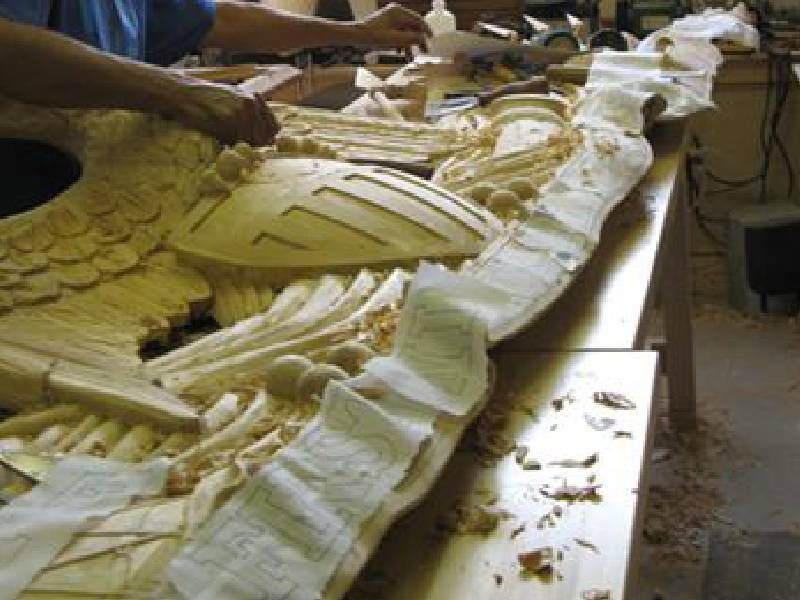A Brief History Of The Painting
Washington Crossing The Delaware was painted by Emanuel Leutze in 1850, the painting commemorates George Washington crossing the Delaware River with the Continental Army during the American Revolutionary War. Three versions of this painting were created between 1850 and 1851.
The original painting was displayed at the Kunsthalle Museum in Berlin, but sadly in 1942 during World War 2 there was a bombing raid and the painting was destroyed.
The second version which is a full size replica of the original piece measuring 12 foot in height and 21 foot in length is displayed in the Metropolitan Museum Of Art. A more smaller third version is displayed in the West Wing reception of The White House.

Image credit: https://www.thevintagenews.com/2019/03/31/washington-crossing-the-delaware/

Image credit: https://www.pinterest.co.uk/pin/538743174173307523/
A Picture Frame Fit For A Legend
The painting Washington Crossing The Delaware was donated in 1897 to the Metropolitan Museum Of Art by its owner John Stewart Kennedy. The painting had been reframed several times before the museum received it, and it was housed in a very simple but large frame.
In 2007 photographs taken by Mathew Brady in 1864 were found in the New York Historical Society and the simple frame that had been with the painting for over a century appeared to not be the original frame for this mammoth piece of art, it was actually displayed in a 19th century spectacular eagle crested gold frame. The Metropolitan Museum Of Art decided that the painting should be displayed in a replica of this magnificent frame and had one hand made to replicate it exactly.
Making The Frame
The frame itself is made of basswood and carved by hand. The eagle sitting on top of the frame was carved separately and attached to the frame once completed. Consisting of many objects specific to war, the crest contains flags, pikes, bayonets, a drum, munitions case and shield which rests on the spread-winged eagle and underneath a furled ribbon reads, “First in war, first in peace, first in the hearts of his countrymen”. The eagle itself is around 14 ft in width.
Because the painting is so large, it could not be removed from the gallery so the frame had to be constructed and fitted around the painting within the museum itself. Each straight section of the frame is a wide cove molding with running acanthus leaf pattern and overlapping leaf motif, the corners bear a round shield with carved flourishes.
The frame when finished was covered in gold leaf. In preparation for this the frame was painted in bole which is a specialised liquid clay, once this was applied the gold leaf could be added. It took over 12,500 sheets before the entire frame was gilded. The completed frame weighs in excess of 3000 lb.








Leave A Comment